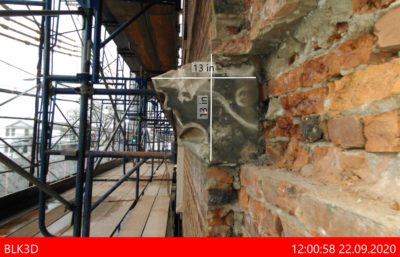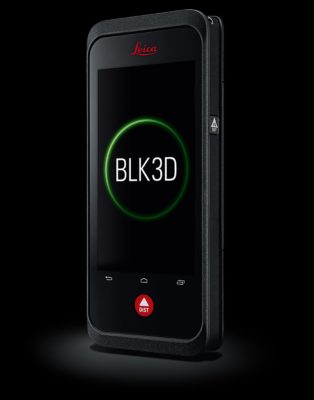 Jim McMahon, president of Structural Stone Concepts, specializes in the historic façade preservation of schools and other buildings in New York City. Working closely with the New York Historical Preservation Office, his business is the largest supplier when it comes to sourcing, measuring, and providing stone to masons who restore historic buildings throughout the city. Here’s why he relies on a handheld imager for his job.
Jim McMahon, president of Structural Stone Concepts, specializes in the historic façade preservation of schools and other buildings in New York City. Working closely with the New York Historical Preservation Office, his business is the largest supplier when it comes to sourcing, measuring, and providing stone to masons who restore historic buildings throughout the city. Here’s why he relies on a handheld imager for his job.
Restorations are expensive, require strict attention to detail and leave no margin for error. Façade renovations, especially with their decorative elements, must exactly match the originals. To do this, McMahon needs assurance that the measurements are always right. This is critical to making sure the buildings will be preserved as they were originally built.
He used to rely on manual measurement methods, like tape measures, cameras, pen and paper. This process took weeks of long days and nights to ensure that measurements were accurate. Then McMahon switched to a handheld 3D imager. Now he takes a picture on the job site, sends the measurements to a CAD professional on his team, and, by the time he gets back to the office, he can exploit the scans.
Accuracy, flexibility and online collaboration
 The handheld imager makes measuring easier, faster, and more precise. It has taken Structural Stone Concept’s work to a higher level, helping McMahon save time and money, and enabling him to stand out as a contractor known for his dedication to excellence in historical stonework.
The handheld imager makes measuring easier, faster, and more precise. It has taken Structural Stone Concept’s work to a higher level, helping McMahon save time and money, and enabling him to stand out as a contractor known for his dedication to excellence in historical stonework.
McMahon considers using a handheld imager as easy as taking a photo with a smartphone. However, the imager offers more power in its ability to accurately capture the details and dimensions of a space in 3D. It also offers flexibility. When McMahon needs to travel to a quarry to evaluate stone before it’s cut, he can hand off the imager to someone on the team. As it’s so easy to use, anybody can quickly master it. This saves the additional expense of hiring a third party to take accurate measurements. Moreover, when safety or space is a concern, handheld technology is ideal. Sometimes it’s not possible to get into certain spaces to measure. They may be too small, too high or too complex. For example, if measurements of second story windows are required but there’s no space for scaffolding, there’s no way to get up there. A handheld imager can accurately capture those measurements. Another benefit for McMahon and his team is that the imager can provide measurements post hoc that he did not consider necessary at the time of data capture, yet the measurements end up being very important to the project. For example, sometimes he is only looking for the width of a wall. Yet since the entire area is scanned, the measurements are beneficial to other contractors on the job. The ability to get the radius, negative returns, draft, and other information from the scans is tremendous.
The imager also easily connects to file transfer services and popular industry applications. In the shuffle of his work, manual measurements and drawings can be hard to track down – but the pictures aren’t. The images and measurements captured by the imager can be sent to Google Drive, Gmail, OneDrive etc.
Rugged enough for busy urban construction sites
For one of McMahon’s current projects, there can be 15 different trades on site at any given time and all of them can benefit from having accurate measurements and scans of a space. This includes plumbers, steelworkers, and other contractors.
Before he had a handheld imager, McMahon was so busy that he’d hire someone else to document existing conditions. Yet there was no guarantee that those measurements were accurate. If everybody on a job site does this, there’s a greater risk of error. With the handheld imager, everybody on a site has access to the same accurate information, so projects can be completed faster without compromising quality.
McMahon also notes how the technology is durable enough to go on site for heavy construction projects. Along with stone façade restoration experts, he believes that others can benefit from this technology, including engineers and construction professionals working on tunnels and bridges. McMahon believes it can help anyone who needs to take accurate measurements in 3D and generate immediate results that can be shared with the team.